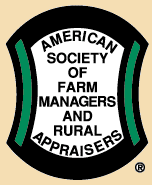This blog is going to serve as background for future posts on land values, but is important to establish criteria to be discussed.
In answer to the question, “Is real estate a good investment”, first, it’s important to define the criteria of “good”. I don’t know what the criteria of “good” is for everyone, but to me, it’s an investment that offers a reliable return on and more importantly, a return of the investment. Return of simply means if I put a dollar in, I want my dollar back. Return on represents growth of the money, like interest or capital gains. Beyond that, “good” might mean how one investment stacks up against another. For example, markets that compete with real estate for an investment dollar are the stock market and similar financial investments (CDs, bonds, etc.). All these investments have different characteristics…..some produce annual income, some long term capital appreciation, and there are differences in safety, liquidity, etc. What is “good” for some investors would be a disaster for others. So “good” is a relative term.
Long term, real estate has proven to be a growth market. With the exception of two periods (late 1920’s and early 1980’s), real estate values have been stable to increasing. Farm income fluctuates considerably, but tends to also run positive.
The combined formula considering both income and property value changes indicates the combined yield to the investment, and is written as follows:
Yield = Annual Rate of Return + Property Value Change
Example: Property value = $3,000 per acre. Net income is $90 per acre from renting the property (3% Annual Rate of Return) and property value increasing 10% per year.
Yield = Rate + Change = 3% + 10% = 13% Annual Yield
So in the context of an annual cash on cash return (3%), the investment is not so hot. But throw in the change in value and 13% looks pretty good (compared to the stock market, bonds, etc.), but keep in mind that 70% of that yield is coming from an increase in property values.
So what happens if RE values go down? Trouble. Really BIG trouble!
The formula for yield is the same, but using the same examples as above, if property values were to decline 10% in one year (if you don’t think this can happen, look to the residential market and the subprime problems), then Yield is:
Yield = 3% + (10)% = (7)% – A negative annual yield of 7%
In this scenario, the only way to achieve the 13% yield (assuming income stays the same), would be to lower property values. How much?
Rate = Yield – Change = 13% – (10)% = 23%
Value = Income / Rate = $90/.23= $391
Ouch! The formula overcooks it beyond reality, but the market does work in that direction. In the 1980’s, when land values started down, they kept going down until farm income alone supported values that were competitive with other investments. In that case, the drop was about 50 to 60% in many markets and cash on cash returns of about 8% to 10% from farm income alone. At that point, investors cashed in CD’s and started buying land.
So here is the scary truth: for real estate to remain a good investment today (double digit yields) land values must continue to rise. The safety factor is that in the last hundred years or so, they have only failed to do that twice. Maybe not double digit, but at positive gains at least.
On the income side, popular opinion is that the current land value boom is income driven, most say it’s directly tied to ethanol. If that is true, then land capable of producing a product that can be converted to ethanol should be the one in demand. In the Midwest, right now, the ethanol producing commodity is corn. And corn prices have risen:
This is a 15 year summary of corn prices on the Chicago Board of Trade and clearly shows a spike in prices in 2007. While much speculation exists that corn prices are going to stay at $3 or $4 per bushel, historically, this has not been so. In the past 10 years, corn prices have been below $2 more than they have been above $3. Almost every spike in prices above $3 were the result of weather driven crop failures. But that was before ethanol. BUT, ethanol is also sensitive to corn prices. For ethanol to be competitive as a fuel, there is a price point for corn. I don’t know what that is, but judging from reports of ethanol plants closing or halting construction, I’m guessing it’s not much more than $3. There are also the other corn based industries to consider…..the ones that existing before ethanol. All the livestock operations….cattle feedlots, dairy farms, hog farms, poultry (layers, broilers and turkeys) and a host of other industrial uses not often considered. At $3 and $4, many are suffering and running the risk of shutting down. So is $3 the new standard for corn prices? I don’t know, but it will be interesting to watch it play out. And what of the other land types that don’t produce ethanol commodities? All the pasture and wooded tracts. They have risen too….not as much as corn producing cropland, but a lot. Is that ethanol based or investment driven? My guess is the latter.
So with land prices at all time highs and many farm commodity prices at all time highs is farm real estate a good investment? As long commodity prices stay where they are and land values keep going up as they have been, and the criteria of “good” is an investment yield of 10 to 15%, yes!
Will corn prices stay high and land values keep doing up? That’s what we are watching and will report on as we find it. Stay tuned!


